In Search of Hawaii's Gravel Roads
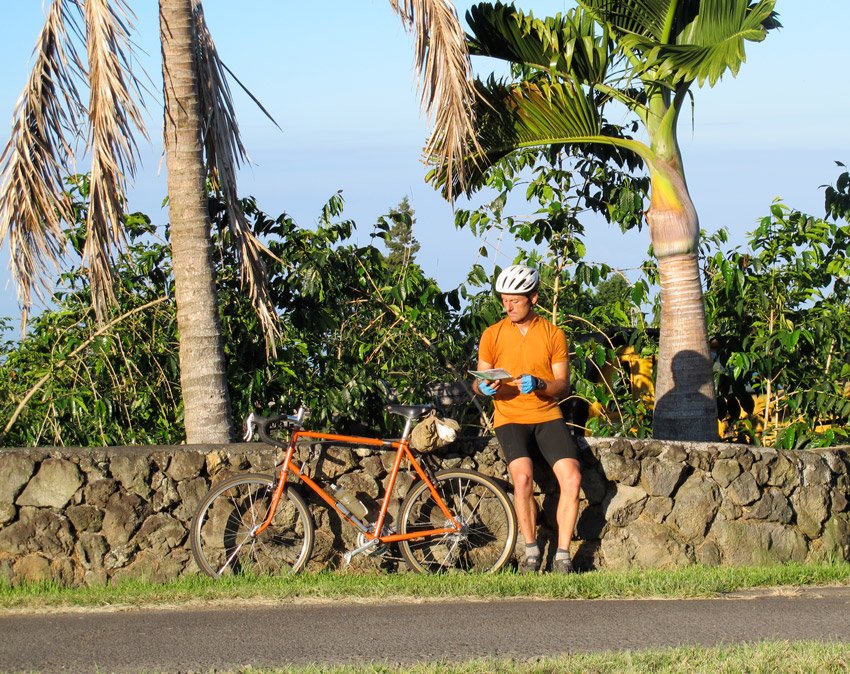
During a recent vacation on the Big Island of Hawaii, I did plenty of snorkeling and hiking, with a bit of surfing, and otherwise enjoyed the beaches. Most of all, the mountainous island presented the opportunity to explore a new landscape by bike. The Big Island is famous for the Ironman Triathlon, and most cyclists I saw were on the shoulder of the main highway, riding tri or racing bikes with narrow tires.
I had a different type of riding in mind. I wanted to explore the mountain roads of the island. After a few memorable road rides that will feature in an upcoming issue of Bicycle Quarterly, I set out to explore the gravel roads above Captain Cook during our last few days on the island. I had seen the roads on my map, and it looked like several nice loops were possible.
I had brought Alex Wetmore’s travel bike, which was designed to fit a large range of his friends. It packs into a suitcase as large as the front wheel, so it was simple to bring along.
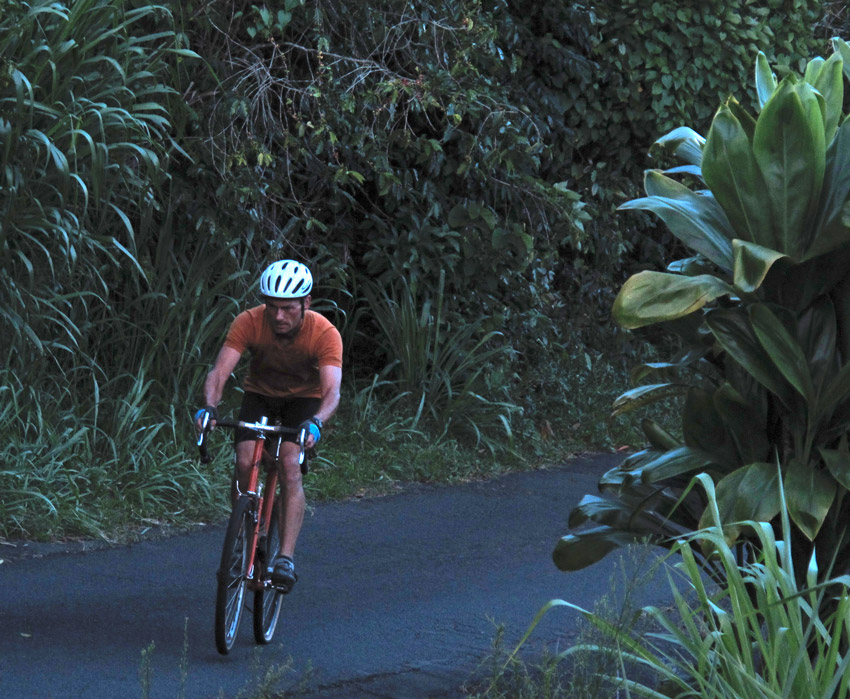
Captain Cook is on the western slopes of Mauna Loa, one of the two big volcanoes on the island. Apart from the highway that circles the island, most roads switchback either up or down. I wasn’t interested in the beach, so that meant going up. Without a handlebar bag adding a little weight to the front of the bike, it was sometimes hard to keep the front wheel on the ground during steep climbs.
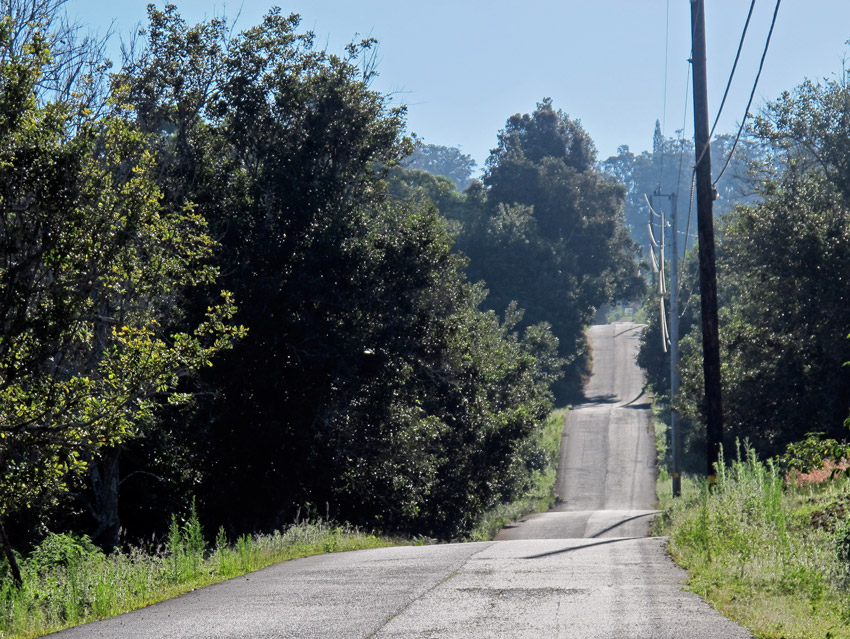
And steep they were, these roads. While the Hawaiian shield volcanoes look like a shallow shield from a distance, up close they are made up of individual lava flows, which breaks them up into flat plateaus and very steep ascents. The town of Captain Cook lies at the foot of such an ascent…
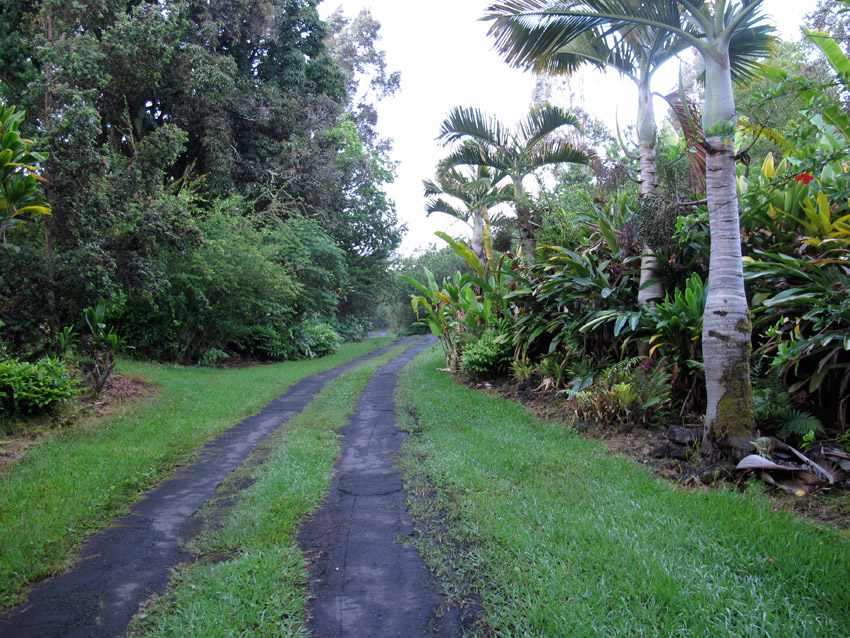
The first morning, I tried all kinds of small roads, often merely two tracks of asphalt with grass in the middle. I climbed and climbed, only to find dead ends. It was fun, but I was not successful in my goal to reach the gravel roads on the plateau above the town.
That night, I fired up my travel laptop and checked satellite images on Google maps. I prepared the next day’s ride in great detail, tracing routes on the map and checking the satellite images to make sure the roads really existed. I was excited, as it seemed certain that I’d reach my goal this time.
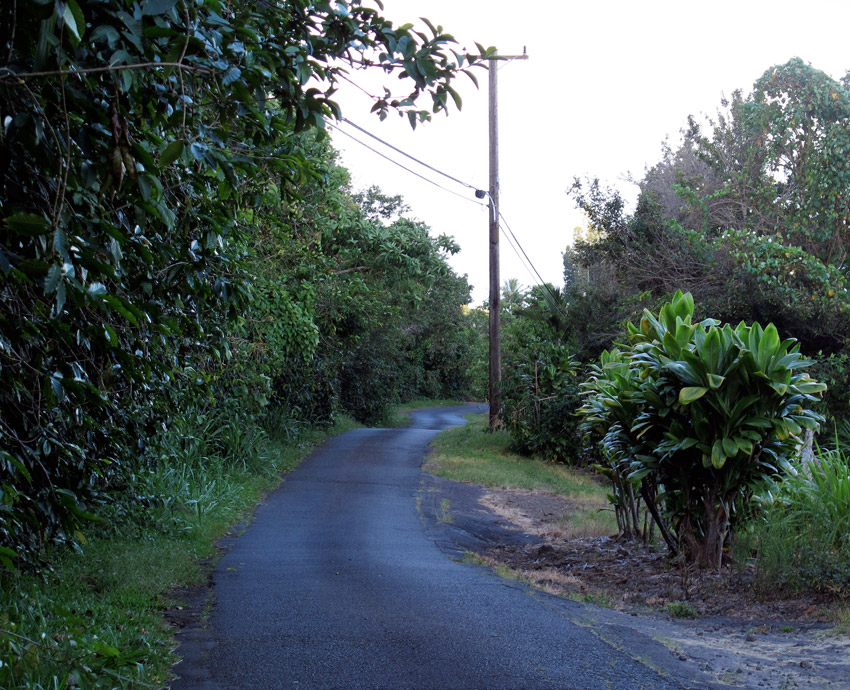
I climbed yet another vertiginous road that seemed to lead straight up to the sky. It was a fun 30-minute climb. On top, another disappointment awaited. The gravel road was there, but it led through farmland. There were gates and “No Trespassing” signs. The gates did not show up on the satellite images, which is why geographers insist on “ground truth” when they interpret these images.
A man walking his dog said: “You are the first cyclist I’ve seen up here!” He confirmed that yet another promising side road ended up at “an estate”. I took it anyhow – it was a nice ride.
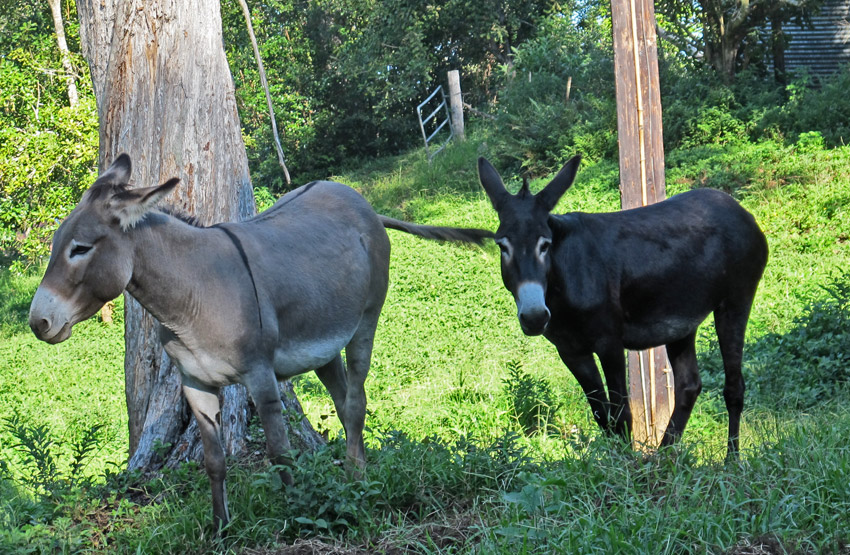
On top, I met two mules behind yet another gate. The mules came over to see what I was doing as I checked my map. I tried another road, with the same result – gates blocked off the access to the gravel roads.
I finally gave up and just enjoyed the ride. The climbs were so steep that I had to keep working hard all the time. The descents had me brake continuously. Where possible, I let the bike roll to cool the rims. Several times I stopped to check the rims’ temperature. Each time, they were too hot to touch, but not sizzling when I put a wet finger on them. No danger of melting the rubber on the tire bead and suffering a blowout, then.

I enjoyed my ride immensely, even the parts on the highway that connected the various hillclimbs. I passed a beautiful old church…

… and incredible trees. The vegetation on the island never ceased to amaze me. Depending on the slopes’ orientation to the prevailing winds and thus moisture, the landscape can be almost desert-like or lush rainforest. Captain Cook was on the lush side, although not as green as the northern side of the island.
I wish I had more time, because after looking at various maps, I now have found a few roads that look like they should connect to the gravel roads. Only “ground truth” can tell whether they really do. I guess I’ll have to come back…
Further reading: The full story of the Hawaiian adventure was published in Bicycle Quarterly No. 50 (Winter 2014).


